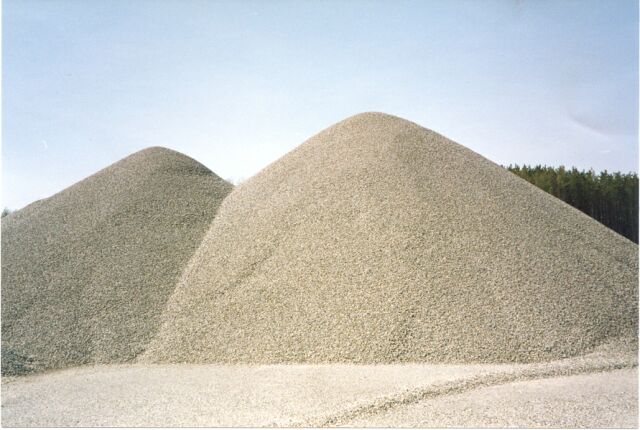I'm stealing this image from Irrational Cube as a description of how students come to understand math.

I want to use it to illustrate how many students (and maybe some of you) understand infinity.
By the time they get to me in calculus, they've got step 1 down already. Infinity is a cool enough subject to have made it to somewhat mainstream life. "I love you times infinity" and "To infinity...and beyond!" and "Infinity plus one" are all phrases I expect most people to have heard at this point in their lives.
We use the concept of infinity in calculus a LOT, so I try to give students a glimpse into some of the interesting facts about infinity. In particular that there are different KINDS of infinity (countable and uncountable, to those "in the know") and "all infinities are created equal, but some infinities are more equal than others."
In Part 1 here, I'm going to just talk about how to compare sizes of two groups of objects mathematically.
When you're talking about infinities, how can you compare their sizes? In particular, how can you compare things that you don't want to (or can't) count?

Imagine two piles of sand about waist high. Which has more sand? How could we figure it out without counting? Well, one option would be to turn to physics and assume that all sand grains have the same density/size, so we could weigh the piles. Which is great, but physics doesn't apply very well to numbers and infinities.
So, let's go in another direction. Imagine two piles of wooden blocks (like for babies): one pile has 19 blocks and the other has 20. How could a baby tell which pile has more blocks? The piles probably look about the same size to him and he can't count, so how could he figure it out?


Well, an option that works is to match them up in some way. Grab one block from each pile and move them behind you. Keep doing that until you get to the end when you go to reach for another pair and have only one left in one hand and none in the other.
This process also seems impossible with infinity (because there won't be an "end"), but it's a process we can exploit. Imagine those baby blocks were each labeled. The pile with 19 blocks had letters on them: A, B, C, ..., S. The pile with 20 blocks had numbers on them: 1, 2, 3, ..., 20. Now, if we can make up a function that tells us which numbers can match up with which letters, then we don't ever have to even touch the blocks and notice that one is left over.
As we move to the math, we have to make sure that our processes fit our intuition with the blocks. So, what does it mean to match the blocks with a function? It means that we have some list or maybe a process so that a person can give us any block (letter or number) and we can tell them which other block it is matched with. There may be more than one way to match them. One option could be: A = 1, B = 2, C = 3, ..., S = 19. Another might be A = 19, B = 18, C = 17, ..., S = 1. There are lots of others that could work, but in order to say the two piles are the same size, you only need one that works. What we have to make sure we avoid, though, is "matching" a block twice so that if A = 1, then no other letter can also be matched with 1 and no other number can be matched with A.
To say that one pile of blocks is bigger seems like a much harder chore. We have to show that there is NO WAY to match the blocks. How can you show that you can't do something? We'll address that when we attempt to do it later in another "diary" entry.
Love the different sizes of infinity stuff. Amazing fact that there are more real numbers between 0 and 1, then there are rational numbers at all. My mind continues to be blown at this stuff even 10 years after I "proved" it in college. Awesome.
ReplyDeleteThat's where I'm headed with this. Just putting it in more high-school-friendly terms.
ReplyDelete